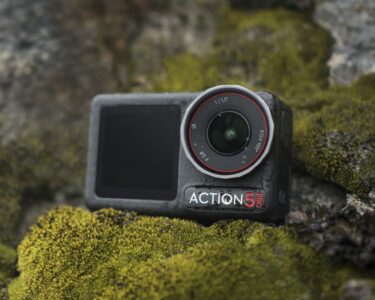It was a dreary, drizzly day near Parma, Italy, when two scientists first took on the Wall of Death.
An amusement park attraction, the Wall looks something like a giant wooden barrel with the top sawed off. Daredevils on motorcycles zip around the inside, driving along the circular wall in a feat that seems to defy gravity.
But exercise physiologists Gaspare Pavei and Valentina Natalucci weren’t doing motorcycle stunts — they were testing out a technique to run on the moon.
If the team’s calculations were correct, future moon dwellers running fast enough inside a cylinder would be able to stay on the wall, rather than float down to the ground, says Alberto Minetti, a physiologist at the University of Milan. That suggests the technique could one day offer lunar inhabitants a new means of Earth-like exercise, some 384,000 kilometers from our home planet.
Because the moon has only about a sixth of Earth’s gravity, there’s a world of difference between exercising there and here. Lower gravity means people’s bodies don’t experience the same physical stresses they do on Earth. Pounding the pavement during a run or doing pushups at Earth gravity, or 1 g, builds muscle and strengthens bone. But on the moon or in space, muscles atrophy and bones become brittle. Just six months in space, researchers have shown, can damage the bones as much as a decade of aging (SN: 6/30/22). Scientists are looking for ways to counteract these detrimental effects, Minetti says.
Running horizontally along a cylinder’s curved wall generates centrifugal force, the same thing that holds water at the bottom of a bucket when whirled overhead (SN: 7/15/20). Enough force would keep moon runners — and scientists emulating lunar gravity in Italy — on the wall and let them experience artificial gravity that’s close to the gravity they’d feel on Earth.
So on that gray day last June, Minetti’s lab members Pavei and Natalucci donned harnesses and took a giant leap for science. Each runner’s harness attached to a bungee cord suspended from a nearly 40-meter-tall crane. That effectively reduced Pavei’s and Natalucci’s weight, mimicking moon gravity. Then, they had to figure out how to shift from standing vertically on the ground to running horizontally along the cylinder’s walls.

Pavei was up first. He sprinted straight at the wall like a kid trying parkour. No luck. He gently skidded down to the ground on his bungee cord. After a few failed attempts, Pavei took a cue from Wall of Death motorcyclists. He approached the wall at an angle, running counterclockwise up a small ramp at the cylinder’s base in a spiraling path. Suddenly, Pavei was cruising around nearly horizontal, shoes slapping the walls, body almost parallel to the ground.
“WOW,” Minetti remembers screaming in excitement as he watched from the ground. “I knew that physics and mathematics predicted this,” he says, “but it’s different … when you see it in reality.”
Minetti had worked for almost two years to get to this point. He had organized logistics with the crane rental and the amusement park attraction — and convinced his university to OK the experiment. It was “not a very orthodox kind of request,” he says.
During repeat runs by Pavei and Natalucci, the team collected data including distance traveled, and how long runners’ feet were in contact with the wall and how long they were airborne between steps. That let them calculate runners’ velocity and estimate just how much force was generated during their sprints — about three quarters of a g, the scientists report in the May Royal Society Open Science.
If moon colonists ran eight to nine laps per day, the team calculated, that would be enough to prevent bone loss, even with breaks every few laps. They based their conclusion on data from prior studies that tracked people’s bone density after bed rest and exercise. Minetti’s team had just one day for experiments with the Wall of Death, but he has more questions in mind, like whether wall running could directly counteract the effects of bed rest experiments, which scientists sometimes use to emulate the effects of low gravity on otherwise healthy participants.
So his university has OK’d building a wall of their own, called the Moon Wall, or M-Wall, tailor-made for lab experiments rather than an amusement park.
Minetti points out a minor issue for any would-be moon runners: the need for speed. They have to race pretty fast, he says, about 5 to 6 meters per second — roughly a 5-minute mile. But you don’t need to be an elite athlete to achieve this speed in short bursts, Pavei says. It’s roughly half as fast as the world record for the 100-meter dash, set by Olympic track-and-field champion Usain Bolt. Running faster, though, would generate more artificial gravity and have a greater impact on the body. If Bolt, for instance, were to sprint around the wall at top speed, he’d probably have no trouble surpassing 1 g, Pavei says.
But to confirm that, he adds, “I would be very happy to test him.”





